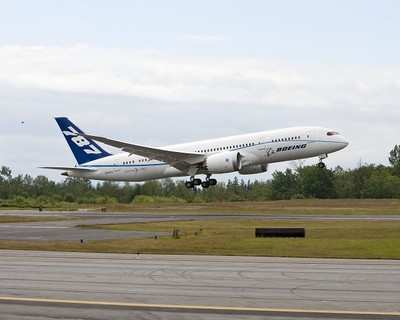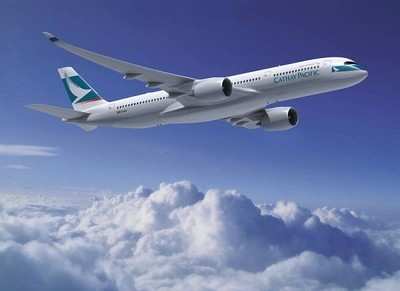Thu, Aug 26, 2010
Airlines Will Seek Fuel-Efficient, Lightweight Airplanes
From the aircraft integrator's perspective, fuel-efficient and
light-weight aircraft that adhere to environmental norms and have
low operational costs are the key market drivers for global
commercial aircraft programs. Airline operators have been under
immense pressure to reduce operational costs and adhere to
environmental norms, resulting in the systematic replacement of
existing fleets. Aircraft integrators either replace an existing
model or fill the gaps in their product line.

New analysis from Frost & Sullivan, "ROSM-Global Commercial
Aircraft Programs-Revenue Opportunities and Stakeholder Mapping",
finds that the market earned revenues of $2.35 billion in 2010 and
estimates this to reach $27.59 billion by 2020. The market is
likely to grow at a compound annual growth rate (CAGR) of 31.48 per
cent during this period and the highest revenue is likely to be
generated in 2020. The end-user markets covered in this research
service are single aisle and twin aisle.
"Boeing is planning to start delivery of the 787 by the end of
2010, with around 50 per cent of the aircraft built from
composites," says Frost & Sullivan Team Leader (Aerospace &
Defence Practice) John Siddharth C.P. "Although it is meant to
compete with Airbus 350 (A350), the B787 will have an edge due to
its early entry into service three years before the A350."

Boeing B787
In the last decade, legislative norms have significantly
impacted the aviation industry. The major norms include caps on
emissions and noise reduction. Such stringent norms will drive this
market as airline operators will be impelled to procure new,
quieter and more fuel efficient fleets. However, the cash-in-hand
(CIH) factor is gaining importance from the suppliers' perspective
due to the development of a risk-sharing partnership model. The
suppliers also prefer to get involved in risk partnerships to
secure the higher margins given to risk-sharing partners by
aircraft integrators in the first five to ten years of
production.
"The cost of development of a new aircraft program costs
billions of dollars," explains Siddharth. "Besides the allocated
budget, the cost of development exceeds - referred as cost overrun,
this has been a major challenge for the industry."

Airbus A350 Artist's Concept
Aircraft integrators other than Boeing and Airbus need to prove
their credibility in terms of future models and attract suppliers
for risk-sharing partnerships. As the market segmentation becomes
more niche, airplane integrators should focus on their expertise.
"Suppliers need to ensure higher margins in the initial years of
new aircraft delivery so that there is optimum cash flow for
continuous investments," concludes Siddharth. "Tier 3 suppliers and
the design segment suppliers should also get equipped with greater
CIH to sustain the change in business models."
More News
Also: ANOTHER Illegal Drone, KidVenture Educational Activities, Record Launches, TSA v Shoes The Senate confirmed Bryan Bedford to become the next Administrator of the FAA, in a ne>[...]
Also: Sully v Bedford, Embraer Scholarships, NORAD Intercepts 11, GAMA Thankful Middle Georgia State University will be joining the Federal Aviation Administration’s fight ag>[...]
Also: DarkAero Update, Electric Aircraft Symposium, Updated Instructor Guide, OSH Homebuilts Celebrate The long-awaited Sonex High Wing prototype has flown... the Sonex gang tells >[...]
Also: Sully v Bedford, Embraer Scholarships, NORAD Intercepts 11, GAMA Thankful Middle Georgia State University will be joining the Federal Aviation Administration’s fight ag>[...]
30-Year USCG Veteran Aviator Focusing On Member Benefits The Vertical Aviation International Board of Directors announced its new leadership officers in April, and all began their >[...]
 Airborne 07.11.25: New FAA Boss, New NASA Boss (Kinda), WB57s Over TX
Airborne 07.11.25: New FAA Boss, New NASA Boss (Kinda), WB57s Over TX Airborne-Flight Training 07.10.25: ATC School, Air Race Classic, Samson School
Airborne-Flight Training 07.10.25: ATC School, Air Race Classic, Samson School Airborne Affordable Flyers 07.03.25: Sonex HW, BlackShape Gabriel, PRA Fly-In 25
Airborne Affordable Flyers 07.03.25: Sonex HW, BlackShape Gabriel, PRA Fly-In 25 Airborne-Flight Training 07.10.25: ATC School, Air Race Classic, Samson School
Airborne-Flight Training 07.10.25: ATC School, Air Race Classic, Samson School Rick Kenin New Board Chair of VAI
Rick Kenin New Board Chair of VAI





